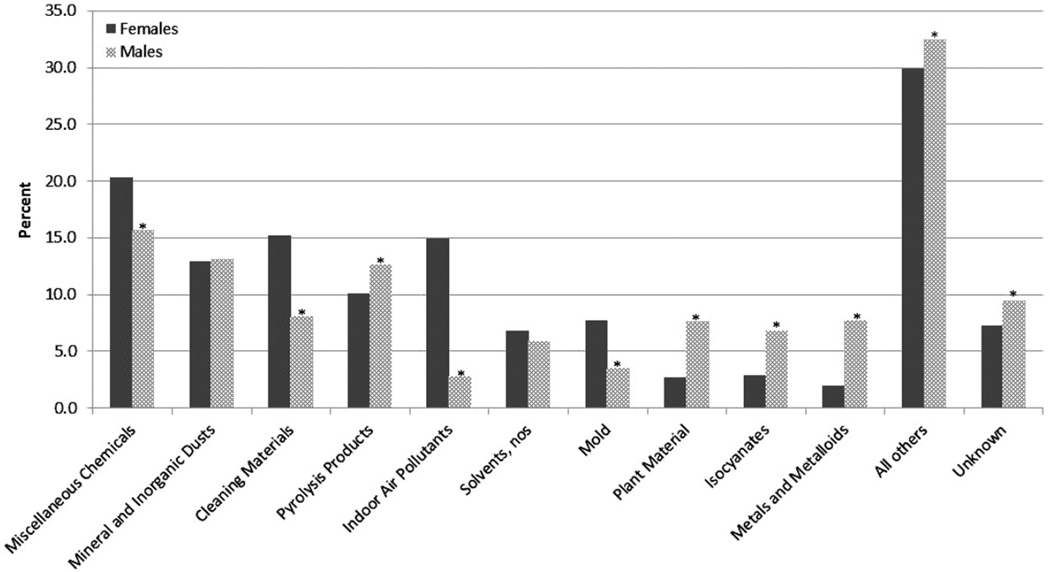Figure 1.
Major AOEC agent categories for reported exposures associated with work-related asthma by gender—California, Massachusetts, Michigan, and New Jersey, 1993–2008. AOEC, Association of Occupational and Environmental Clinics. *p Value for gender differences <0.05. AOEC exposure categories as of September, 2012. See AOEC exposure code lookup (http://www.aoecdata.org/) for more information. Each case may be associated with up to three putative agents. A total of 10 722 putative agents associated with work-related asthma were reported. In 670 cases (8.1%) agents were not identified. Percentages are based on the number of females (4973) and males (3264). All other major AOEC exposure categories include aldehydes and acetals; aromatic hydrocarbons; animal materials; ergonomics; miscellaneous inorganic compounds; halogens (inorganic); physical factors; epoxy compounds; hydrocarbons, not otherwise specified; polymers; acids, bases, and oxidizing agents; aliphatic and alicyclic hydrocarbons; esters; halogenated aliphatic hydrocarbons; ketones; aliphatic and alicyclic amines; alcohols; aliphatic and miscellaneous nitrogen compounds; organophosphate pesticides/carbamate pesticides; phenols and phenolic compounds; glycol ethers; microorganisms, not including mold; glycols; organic sulfur compounds; aliphatic carboxylic acids; cyanides and nitriles; ethers; halogenated aromatic hydrocarbons; aromatic nitro and amino compounds; organochlorine insecticides.

